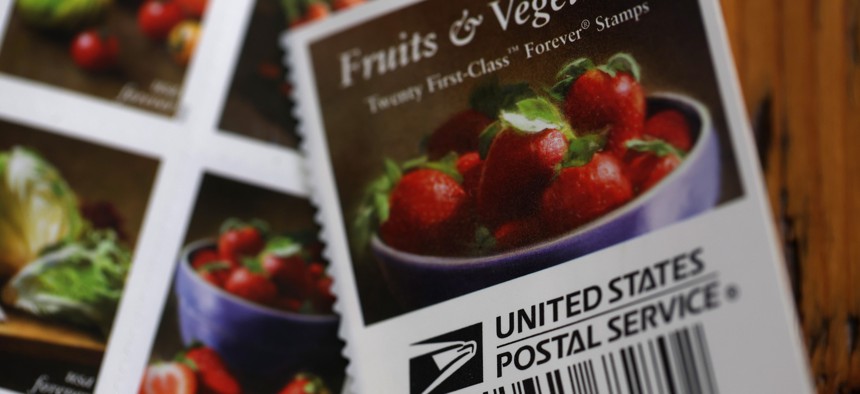USPS must halt rate hikes, bipartisan group of lawmakers say
The House members made their demand the day after the latest price increases went into effect.
A bipartisan group of at least a dozen lawmakers are calling on the U.S. Postal Service to issue a pause on its aggressive strategy to raise prices, saying it is hurting the agency’s business and having detrimental impacts on its customers.
The lawmakers derided postal management for its latest price hike, the fourth in the last eighteen months, and called for it to take a new approach. USPS on Sunday increased the price of a stamp to $0.68, part of a 2% overall increase from current mail rates. The price of a stamp has increased by 24% in the more than three years since Postmaster General Louis DeJoy took office as part of his 10-year plan to take the mailing agency out of its financial hole.
The lawmakers, led by Reps. Emanuel Cleaver, D-Mo., and Sam Graves, R-Mo., said the Postal Service was taking a short-sighted approach that was accelerating volume losses in the mail system. They urged the agency’s board of governors to “halt any further rate increases” until the agency can reassess their impacts on its long-term viability.
“While price increases may increase profit on one side of their ledger, USPS’ leadership has failed to acknowledge the adverse effects price increases have had on their bottom line,” the lawmakers said. “These rate increases directly threaten Americans who depend on a well-functioning postal service for a myriad of needs, such as their healthcare, small businesses and even personal correspondence.”
The bipartisan group noted USPS lost $6.5 billion in fiscal 2023 and is projecting $6.3 billion in additional losses in the current fiscal year. The previous price hikes enabled USPS to grow revenue in fiscal 2023—by 1% for packages and 2.1% for First Class mail—despite volume declines in both categories. Marketing mail, however, saw a 6% decline in revenue. The Postal Regulatory Commission allowed for the higher rate increases in 2020 and DeJoy has tapped into the authority on nearly every allowable occasion, calling them a key part of his plan to allow USPS to find firmer financial footing.
After receiving the new authority, USPS began increasing its rates twice annually in most years. It hiked its First-Class mail rates by 6.5%, July 2022, 4.2% in January 2023 and 5.4% in July 2023.
“As inflationary pressures on operating expenses continue and the effects of a previously defective pricing model are still being felt, these price adjustments are needed to provide the Postal Service with much needed revenue to achieve the financial stability sought by its Delivering for America 10-year plan,” USPS said last year when it announced the most recent hike. “The prices of the Postal Service remain among the most affordable in the world.”
Keep US Posted, an advocacy group made up of consumers, small businesses and other large-scale mail users, said USPS was raising its rates at a faster clip than at any point in its nearly 250-year history and said the approach was hurting business. Former Rep. Kevin Yoder, R-Kan., the group’s executive director, said DeJoy’s plan was creating more instability for USPS.
“It’s time for Louis DeJoy to abandon the Delivering for America plan’s twice-annual stamp increases,” Yoder said. “Traditional mail is still the biggest money-maker for USPS, and each rate hike just drives more mail from the system.”
Cleaver, Graves and the other lawmakers accused USPS of using outdated models to measure the impact of its price hikes and, coupled with declining delivery performance, they are disincentivizing consumers. They called on the governors, who must approve price hikes, to reject any efforts by management to continue on their path of rate increases.
“It is the responsibility of the USPS Governors to intervene before more damage is done to the financial viability of the U.S. mailing industry and the long-term sustainability of the USPS,” they said.
USPS has previously faced bipartisan pushback for other parts of DeJoy's plan, namely his efforts to consolidate parts of the postal delivery network.








